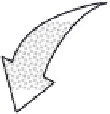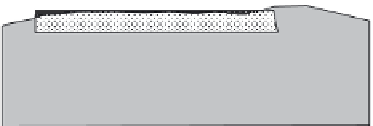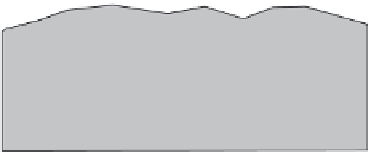Environmental Engineering Reference
In-Depth Information
forms) from these agents. The necessary pieces of information and knowledge required to
generate preventive and mitigation solutions (Figures 9.3 and 9.4) relate to the local geologi-
cal and hydrogeological settings, the types and nature of spills and discharges, the various
environmental and biotic receptors, and most importantly, the status and sustainability
indicators. A useful rule-of-thumb in prescribing sustainability status indicators (the last
set of indicators shown in Figures 9.3 and 9.4) is to set objectives and targets that do not
yield negative impact results; interaction and preventive-mitigation impacts should not
diminish the natural capital component under consideration. Although activities associated
with upstream and downstream industries may inevitably generate impacts that cannot be
fully ameliorated, minimized, avoided, or totally remediated, it is nevertheless necessary
to set status indicators that target sustainability of the natural capital of land environment.
9.3.2 Surface Discharge: Hydrological Drainage, Spills, and Dumping
Surface discharge or liquid/solid contaminant loading of land surface occurs under cir-
cumstances that include (a) hydrological drainage occurring at a mine site at intersections
of mine openings with the water table, (b) percolation from waste rock and mill tailings
piles and surface runoffs, (c) inadvertent spills or deliberate dumping, (d) leaking pipelines,
(e) deposition of airborne noxious contaminants from rainfall and snow loads, (f) applica-
tion of agricultural chemicals (including pesticides) and irrigation, and (g) designed land
farming treatment of contaminated materials. Figure 9.6 shows a schematic of some of
Deposition of airborne noxious
substances
Inadvertent spill and/or
deliberate dumping
Land application of
agricultural chemicals
(including pesticides)
Land farming for treatment of
contaminated soil material
Prepared impermeable
base (membrane?)
FIGURE 9.6
Scenarios showing contaminant loading on land surface of geoenvironment. For small spills and dumps, point
source contamination is assumed. For precipitation and land application of control agents, etc., non-point
source contamination is generally assumed.









































Search WWH ::

Custom Search